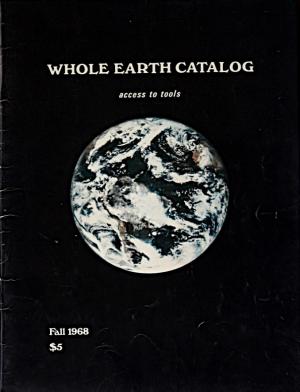Walter Isaacson: Steve Jobs (2011)
Filed under book | Tags: · 1990s, 2000s, apple, biography, business, computing, engineering, history of computing, history of technology, marketing, software, technology

Based on more than forty interviews with Jobs conducted over two years—as well as interviews with more than a hundred family members, friends, adversaries, competitors, and colleagues—Walter Isaacson has written a riveting story of the roller-coaster life and searingly intense personality of a creative entrepreneur whose passion for perfection and ferocious drive revolutionized six industries: personal computers, animated movies, music, phones, tablet computing, and digital publishing.
At a time when America is seeking ways to sustain its innovative edge, and when societies around the world are trying to build digital-age economies, Jobs stands as the ultimate icon of inventiveness and applied imagination. He knew that the best way to create value in the twenty-first century was to connect creativity with technology. He built a company where leaps of the imagination were combined with remarkable feats of engineering.
Although Jobs cooperated with this book, he asked for no control over what was written nor even the right to read it before it was published. He put nothing off-limits. He encouraged the people he knew to speak honestly. And Jobs speaks candidly, sometimes brutally so, about the people he worked with and competed against. His friends, foes, and colleagues provide an unvarnished view of the passions, perfectionism, obsessions, artistry, devilry, and compulsion for control that shaped his approach to business and the innovative products that resulted.
Driven by demons, Jobs could drive those around him to fury and despair. But his personality and products were interrelated, just as Apple’s hardware and software tended to be, as if part of an integrated system. His tale is instructive and cautionary, filled with lessons about innovation, character, leadership, and values.
Publisher Simon & Schuster, 2011
ISBN 1451648553, 9781451648553
656 pages
review (Evgeny Morozov, The New Republic)
review (Sam Leith, Guardian)
review (Janet Maslin, The New York Times)
review (Adam Satariano and Peter Burrows, Bloomberg)
review (Huffington Post)
PDF (updated on 2012-7-25)
EPUB (updated on 2012-7-25)
Stewart Brand (ed.): Whole Earth Catalog (1968-1998) & Whole Earth Software Catalog & Review (1984-1986)
Filed under catalogue | Tags: · apple, computing, counterculture, ibm, software, technology


The Whole Earth Catalog was an American counterculture catalog published by Stewart Brand between 1968 and 1972, and occasionally thereafter, until 1998. Although the WECs listed all sorts of products for sale (clothing, books, tools, machines, seeds – things useful for a creative or self-sustainable lifestyle) the Whole Earth Catalogs themselves did not sell any of the products. Instead the vendors and their prices were listed right alongside with the items. This led to a need for the Catalogs to be frequently updated. (source)
The Whole Earth Software Catalog and The Whole Earth Software Review (1984-1985) were two publications produced by Stewart Brand’s Point Foundation as an extension of The Whole Earth Catalog.
The Catalog and Review were notable for being “devoid of any industry advertising” and for being “accessible and user friendly – written in an glib, conversational style that takes most of the bugs out of microprocessing.”
Fred Turner discusses the production and eventual demise of both the Catalog and Review in From Counterculture to Cyberculture: Stewart Brand, the Whole Earth Network, and the Rise of Digital Utopianism. Turner notes that in 1983, The Whole Earth Software Catalog was proposed by John Brockman as a magazine which “would do for computing what the original [Whole Earth Catalog] had done for the counterculture: identify and recommend the best tools as they emerged.”
Brand announced the first publication of the quarterly Whole Earth Software Review at the SoftCon trade show at the Louisiana Superdome in New Orleans in March 1984. While both were published as an extension of Whole Earth, the Catalog was a large glossy book sponsored by Doubleday and published in Sausalito California while the Review was a small periodical published in San Diego.
The Whole Earth Software Catalog and Review were both business failures. The Catalog was only published twice (1.0 in June and 2.0 in Fall ’85), with only three of The Whole Earth Software Review supplements published. (source)
Wikipedia (WEC)
Wikipedia (WESC & WESR)
Whole Earth Catalog, Fall 1968
Whole Earth Catalog, Spring 1969 (added on 2016-8-24)
The Last Whole Earth Catalog, 1971 (79 MB, added on 2020-4-14)
The Essential Whole Earth Catalog, 1986 (126 MB, added on 2020-4-15)
Whole Earth Software Catalog 1.0, 1984 (updated on 2012-7-18)
View online (incl. other issues)
Electronic Whole Earth Catalog (CD-ROM on Internet Archive, added on 2020-7-16)
See also:
Access to Tools: Publications from the Whole Earth Catalog, 1968-1974, online companion to 2011 exhibition at MoMA;
Index to the Internet Archive’s Whole Earth Collection, compiled by Robert Horvitz (added on 2018-8-18).
Make IT Green: Cloud Computing and its Contribution to Climate Change (2010)
Filed under report | Tags: · apple, climate crisis, cloud computing, ecology, facebook, google, microsoft, technology

Make IT Green shows how the launch of quintessential cloud computing devices like the Apple iPad, which offer users access to the “cloud” of online services like social networks and video streaming, can contribute to a much larger carbon footprint of the Information Technology (IT) sector than previously estimated.
To be clear: We are not picking on Apple. We are not dissing the iPad. But maybe someone can come up with an app that calculates the carbon footprint of using different web sites based on their location and energy deals. Apple is the master of promotion, and while we marvel at the sleek unpolluted design of the iPad, we need to think about where this is all leading and how like all good surfers we can make sure our environment stays clean and green.
Publisher Greenpeace International, Amsterdam, 30 March 2010
12 pages
PDF (updated on 2014-9-16)
Comment (0)
